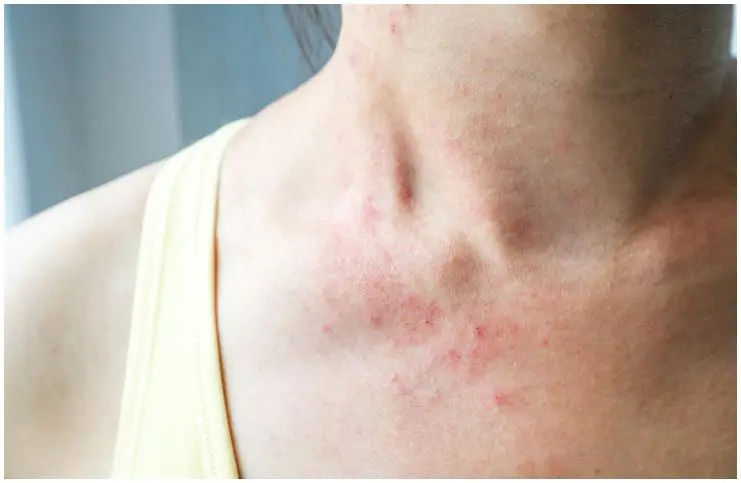The spiritual meaning of eczema:
Eczema is not a single disease but a reaction pattern of the skin produced by many different conditions.
There are at least eleven different types of skin conditions that produce eczema, such as:
- Pompholyx (dyshidrotic eczema);
- Allergic contact dermatitis;
- Atopic dermatitis;
- Nummular eczema;
- Stasis dermatitis;
- Seborrheic eczema;
- Fungal infections;
- Xerotic (dry skin) eczema;
- Scabies;
- Lichen simplex chronicus.
Eczema affects about 10 percent to 20 percent of infants and commonly starts in infancy, with 65% of patients developing symptoms in the first year of life and 90% develop symptoms before age 5.
An estimated 31.8 million people in the United States are estimated to have symptoms of eczema.
It has been estimated that up to 16 million people could be living with eczema in the United Kingdom.
Symptoms
Eczema is usually itchy. For many individuals, the itch is commonly only mild or moderate.
But in some cases, it can become much worse, and you might develop extremely inflamed skin.
Some individuals develop red bumps or clear fluid-filled bumps that look “bubbly” and, when scratched, add wetness to the overall appearance.
Additionally, in adults, chronic rubbing produces thickened plaques of skin.
It is seen in varying severity and different places on the body in babies and children, depending on age.
Face, head, and/or feet are the more usual areas for flares in babies and young children than adults.
Complications
Patients with eczema are prone to have food allergies causing either more subtle reactions or, in some cases, anaphylaxis.
There is also a risk of the skin becoming infected with pathogenic bacteria. Signs of a bacterial infection can include:
- generally feeling unwell;
- fluid oozing from the skin;
- a high temperature (fever);
- a yellow crust on the skin surface;
- the skin becoming sore and swollen;
- small yellowish-white spots appearing on the skin.
Moreover, eye complications may occur, with symptoms including:
- infection (conjunctivitis);
- inflammation of the eyelid (blepharitis);
- eye-watering;
- itching around the eyelids.
Viral infections, especially herpes simplex virus, are more common in people with eczema.
Causes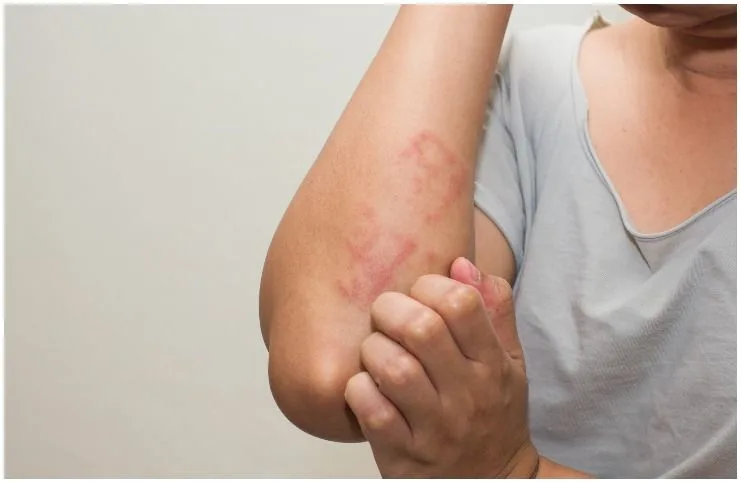
This disease’s exact cause is unknown, but it’s thought to be connected to an overactive response by the body’s immune system to an irritant.
It is this response that causes the symptoms of eczema.
Moreover, it can also be triggered by environmental factors such as pollen and smoke.
Mineral and vitamin deficiency can also play a big role in eczema.
Vitamins A, C, E, and B are particularly important due to the fact that some individuals become deficient in trace minerals, which are much harder to absorb with our soils being so depleted in modern times.
Foods can also trigger the disease, especially chemical food additives (such as colorings and preservatives), dairy products, meat, eggs, or nuts.
READ MORE: Hair Loss – Spiritual Cause
Risk Factors
Common risk factors include:
- excessive sweating – the sodium found in perspiration can lead to irritation as it dehydrates the skin
- mother’s age at child’s birth – kids who are born to mothers who are later in their childbearing years are more likely to develop eczema;
- occupation – jobs that put you in contact with certain solvents, metals, or cleaning supplies substantially increase your chance of this skin condition;
- low humidity – the lack of moisture in low-humidity areas may trigger the skin to react in a negative way;
- allergies – people who have allergies have a higher risk of developing eczema. Some allergens include – certain foods, molds, household dust mites, animal dander, and plant pollen.
Diagnostic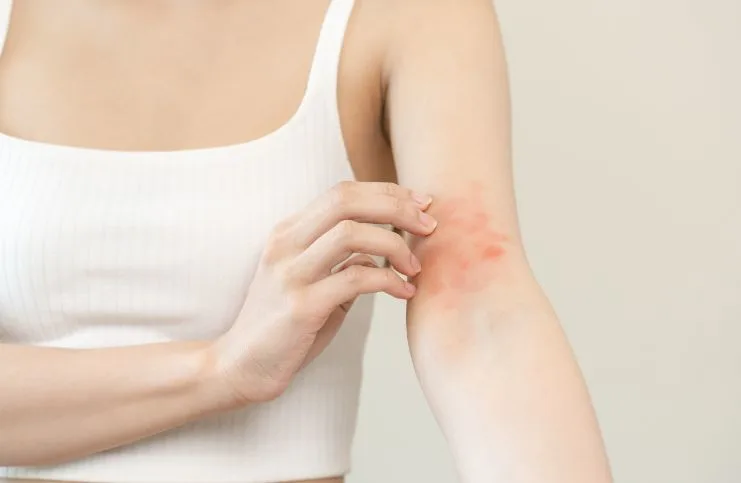
Your doctor will commonly be able to diagnose eczema by assessing your skin and asking some questions about the condition, like:
- whether it has affected the typical areas, like skin creases, in the past;
- whether you have any other conditions which may be related to your eczema, like – asthma or allergies;
- whether there is a history of atopic eczema in your family;
- whether you have flare-ups of severe symptoms;
- when the symptoms first began;
- whether the rash is itchy.
READ MORE: Hip Pain – Spiritual Meaning
Treatment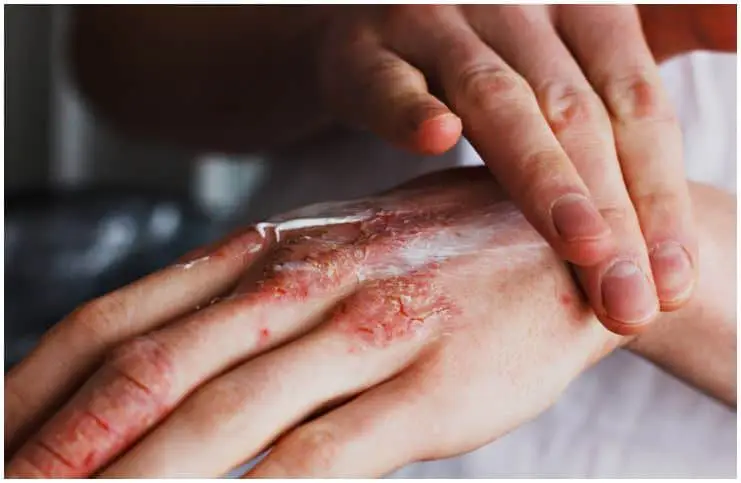
Commonly recommended treatment for eczema include:
- topical steroids – low potency topical corticosteroids are available over the counter for short-term treatment;
- antihistamines – these medications control the itch;
- bandages – they allow the body to heal underneath;
- cytokine therapies – they are usually used in severe cases and target the immune system response;
- emollients (moisturizers) – they are used every day to stop the skin from becoming dry
- get a humidifier since dry air can be stressful for your skin;
- light therapy – this treatment is used for people who either rapidly flare again after treatment or don’t get better with topical treatments.
READ MORE: Stroke – Spiritual Meaning
Prevention
Irritants
Avoid common irritants such as:
- animal fur or dander;
- wool or synthetic fibers;
- pollen;
- soaps and detergents;
- cigarette smoke;
- some cosmetics and perfumes;
- dust mites;
- dust or sand;
- substances like mineral oil, chlorine, or solvents.
Take Shorter Showers Baths
Limit your showers and baths to a maximum of 10 minutes. Also, bath oil may be helpful.
In addition, use warm, rather than hot, water.
READ MORE: Spiritual Meaning of Waking Up at 3AM
Nutrition
Foods that may trigger an eczema flare-up include:
- some types of nuts;
- citrus fruits;
- tomatoes;
- dairy;
- spices, such as cinnamon, cloves, and vanilla;
- soy;
- wheat or gluten;
- eggs.
READ MORE: Atherosclerosis – Spiritual Meaning And Causes
Spiritual Causes of Eczema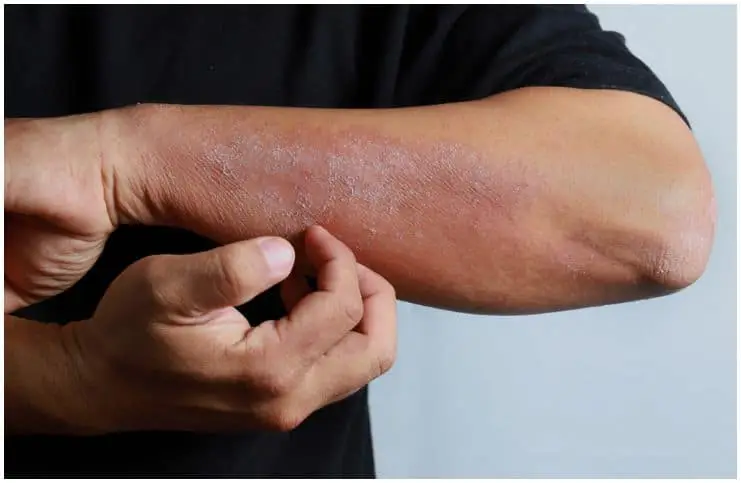
Spiritual causes may include:
- Trying to keep the world at a distance;
- Feeling inadequate or unworthy;
- Isolating and locking yourself inside because of fear of coming out;
- Someone or something getting under your skin or feeling overexposed;
- Extreme sensitivity to circumstances and emotions around you.
Psychological stresses can also provoke or aggravate it, presumably by suppressing normal immune mechanisms.
The spiritual meaning of eczema on hands is frequently linked to unresolved emotional issues. The hands, in spiritual terms, symbolize our interaction with the world. They represent how we give and receive energy and experiences.
READ MORE: Back Pain – Spiritual Meaning
Healing Affirmations
”I release all fear I am holding in my skin.”
”My health is improving.”
”I am comfortable and confident.”
”Peace and harmony, love, and joy surround me and indwell me.”
”I clear all the ways I am afraid to let go of the old pattern thinkings to allow new ways to emerge.”
”I am safe and secure.”
”I give myself permission to heal.”
”I release any feelings of being unsettled that I am holding in my skin.”
READ THIS NEXT: Headaches and Migraines – Spiritual Cause
References https://www.urmc.rochester.edu/news/story/3076/study-reveals-major-shift-i https://sydney.edu.au/research/volunteer-for-research-study/other/eczema

